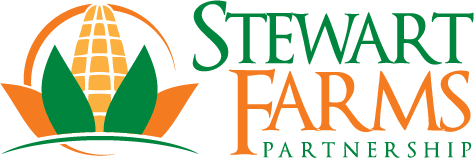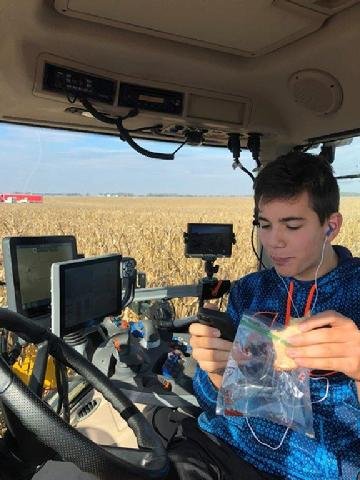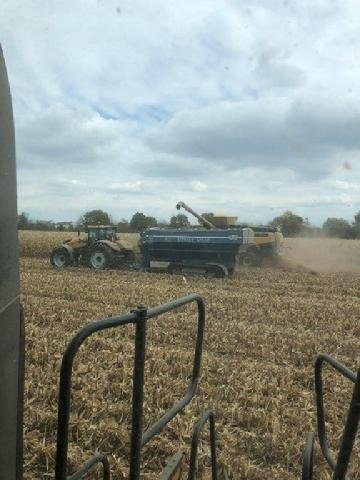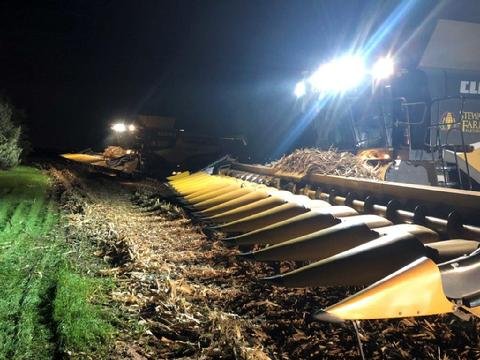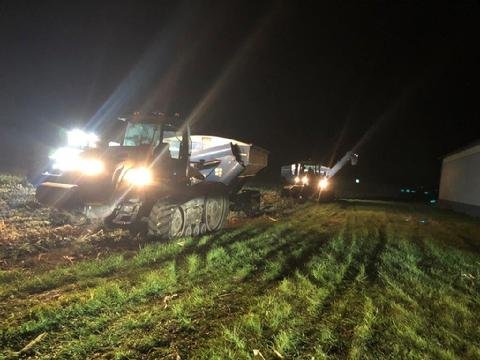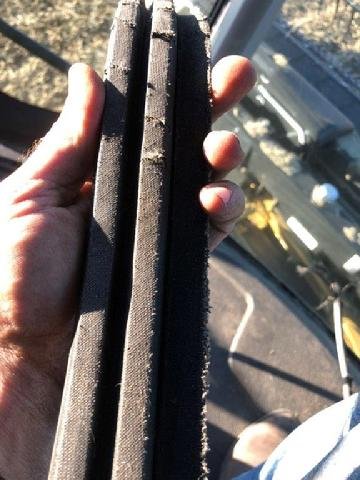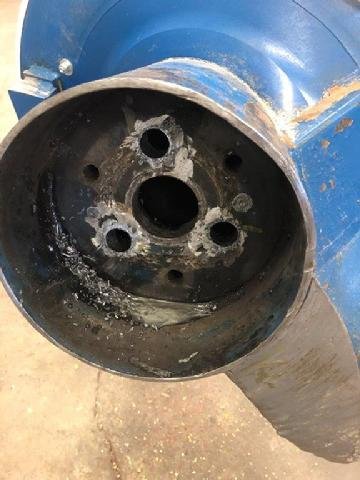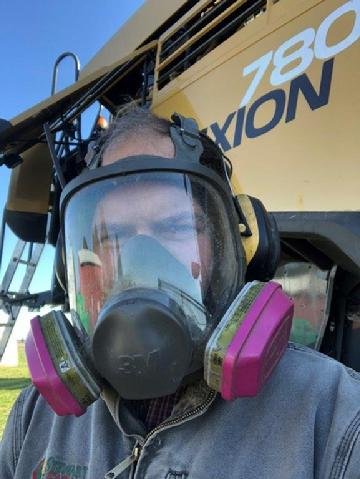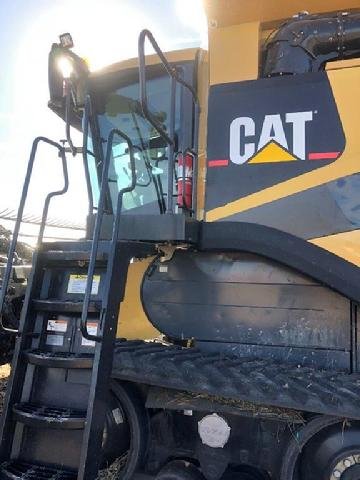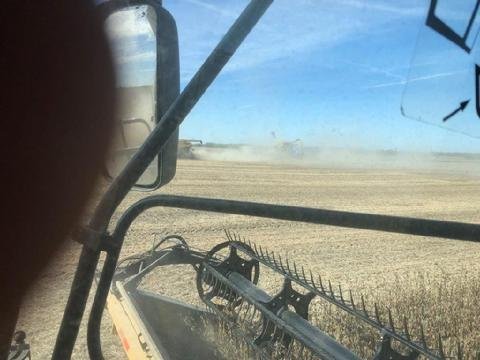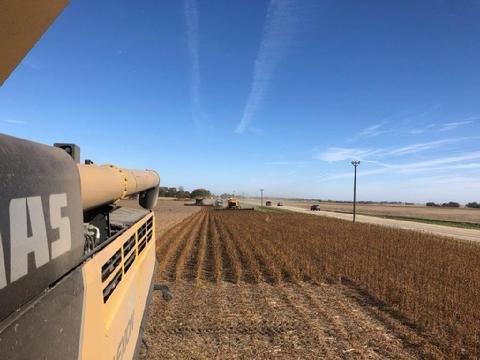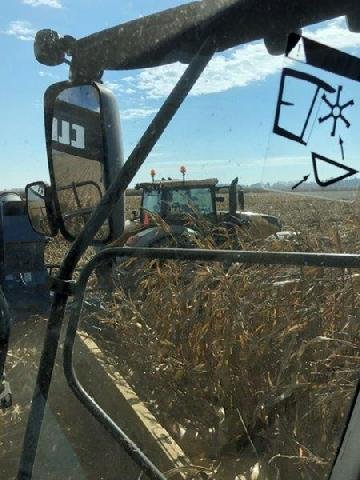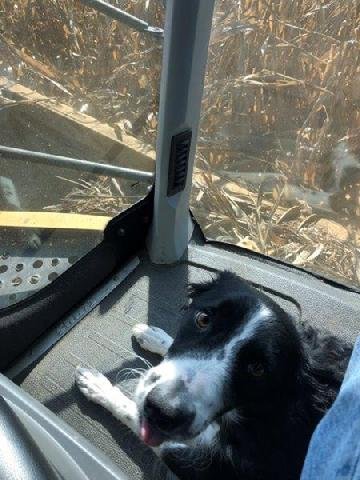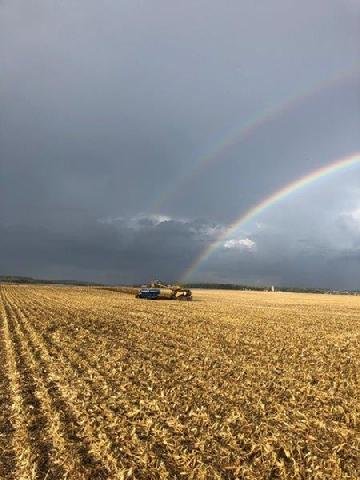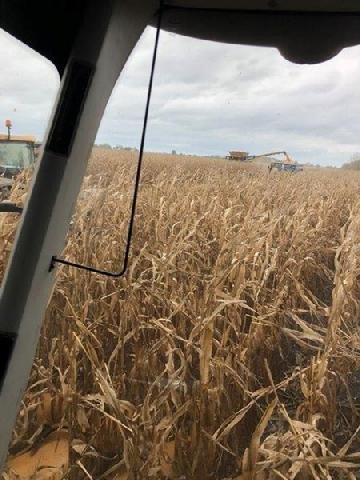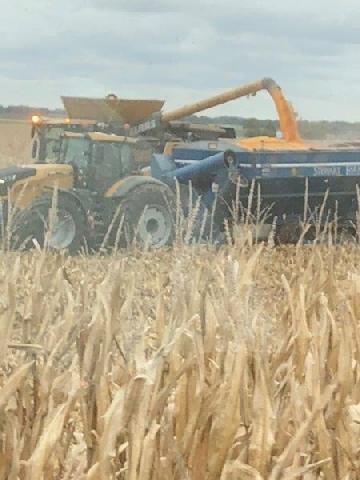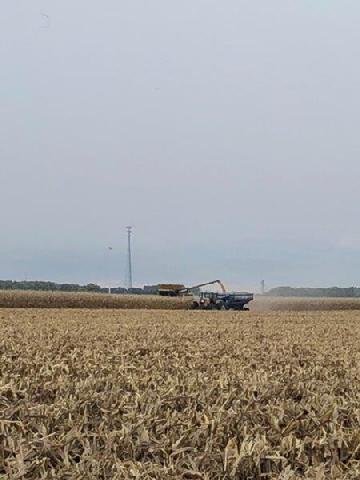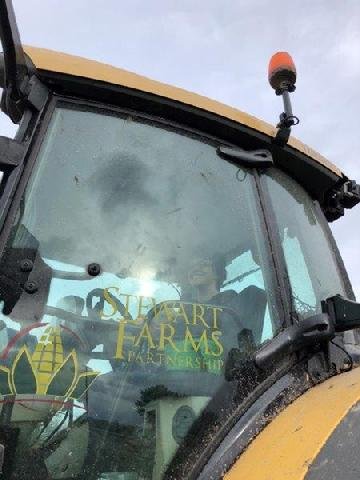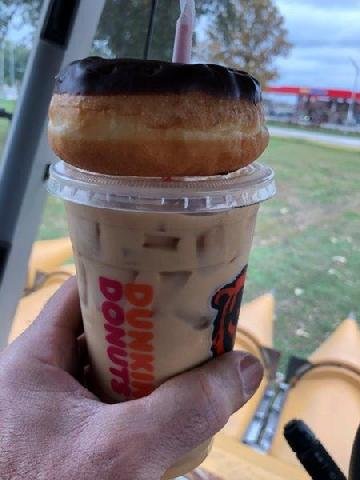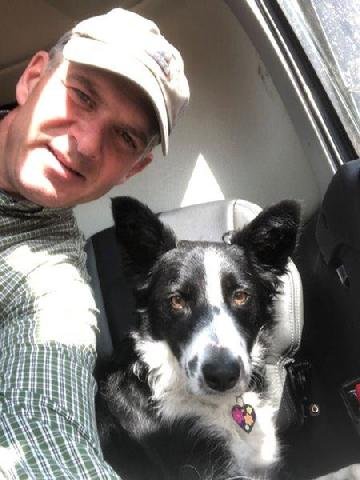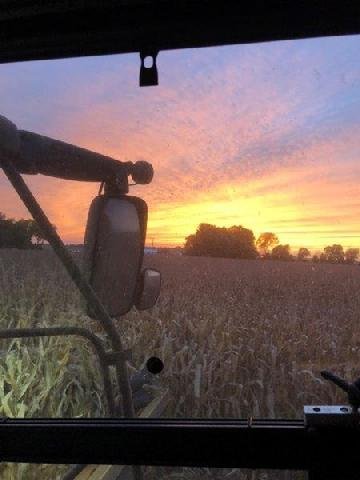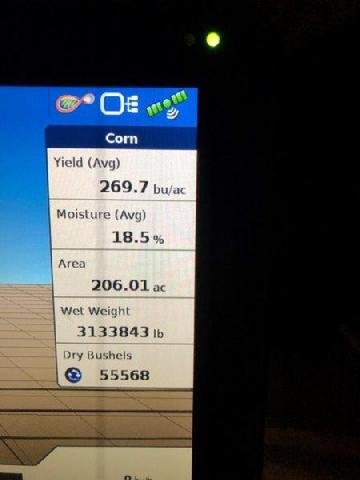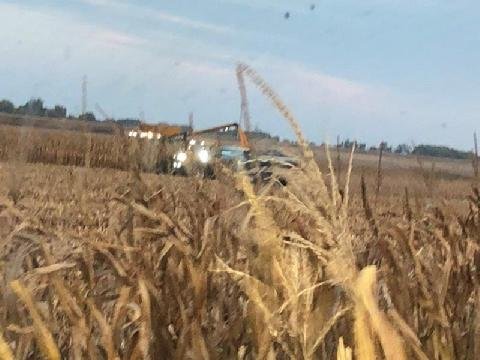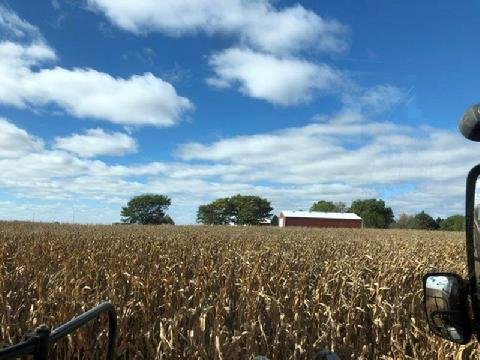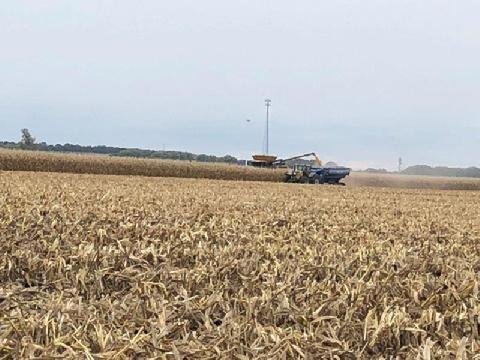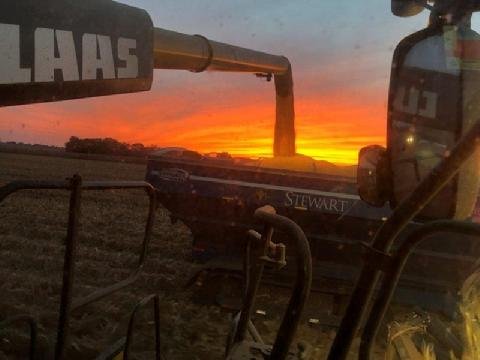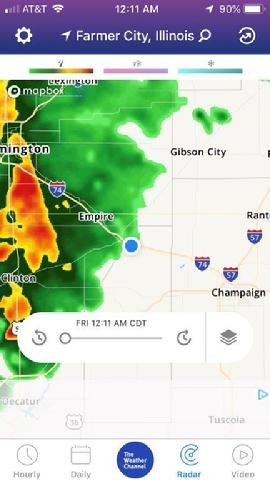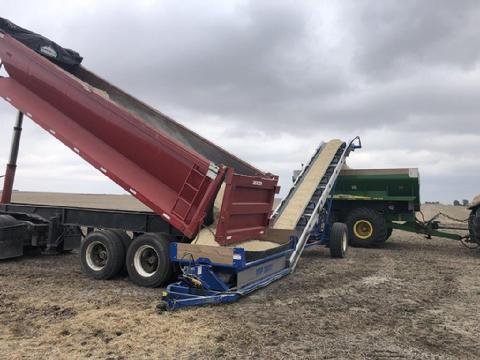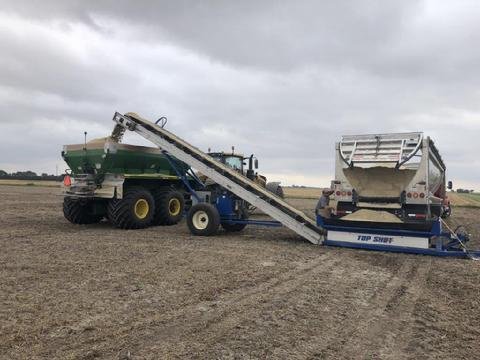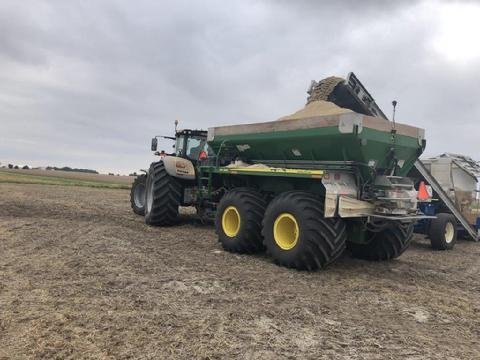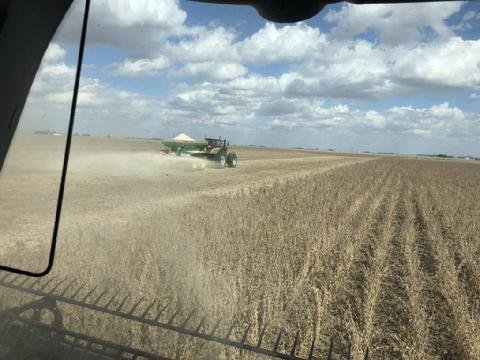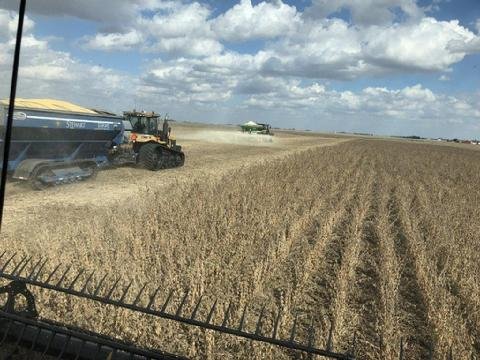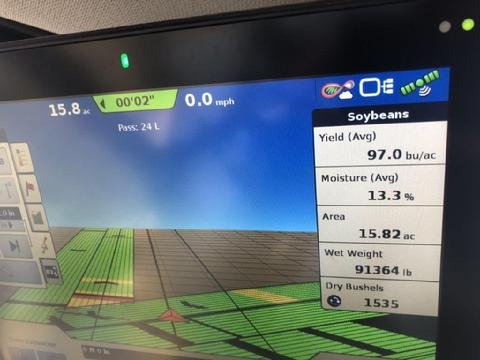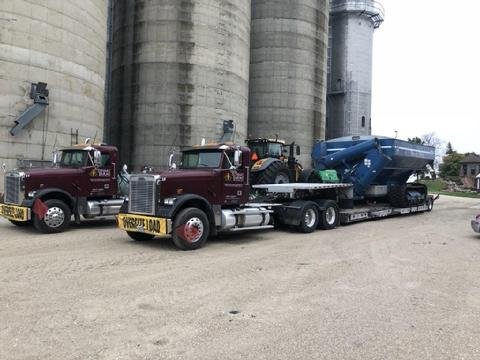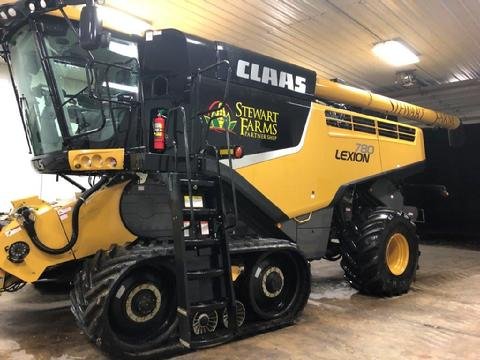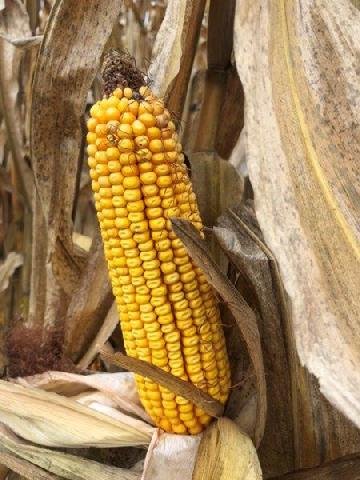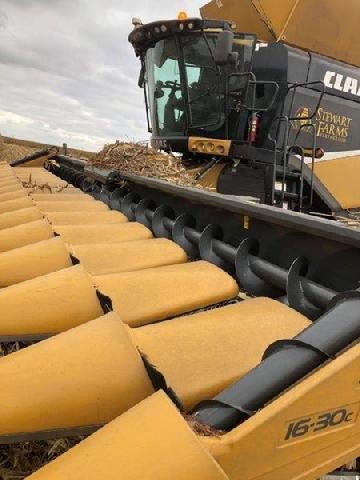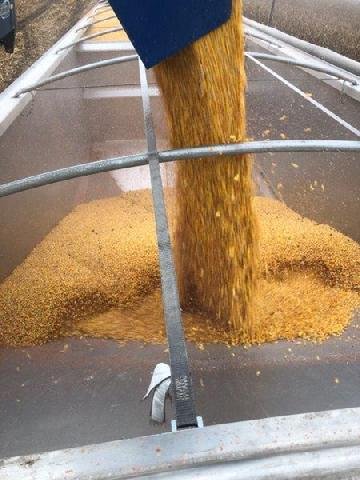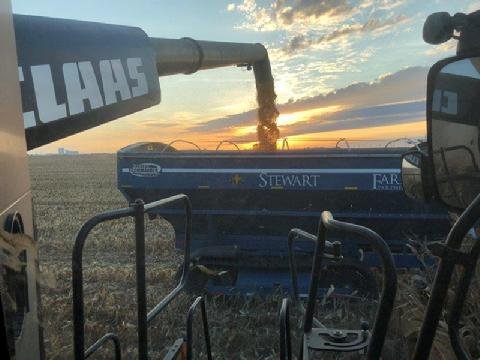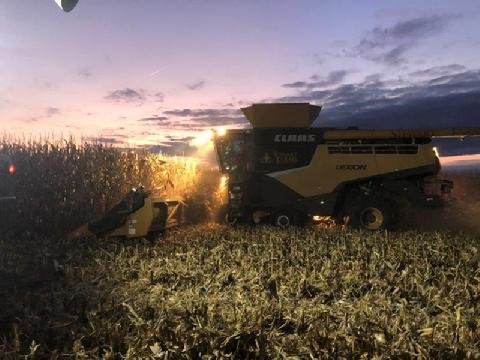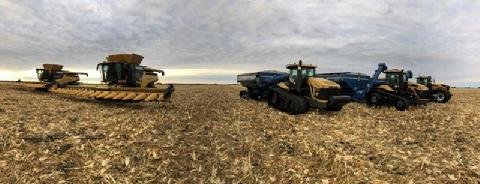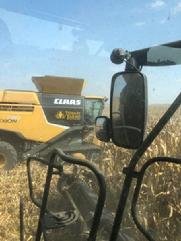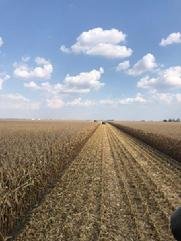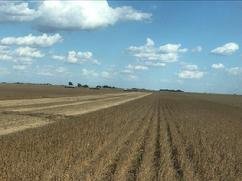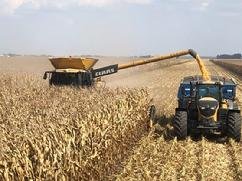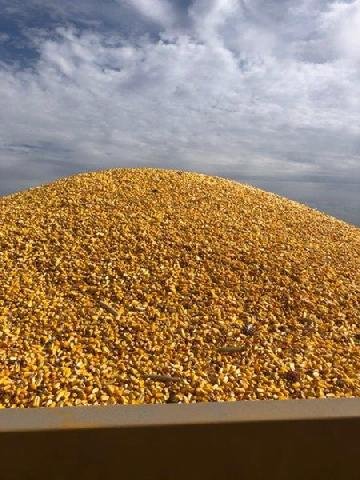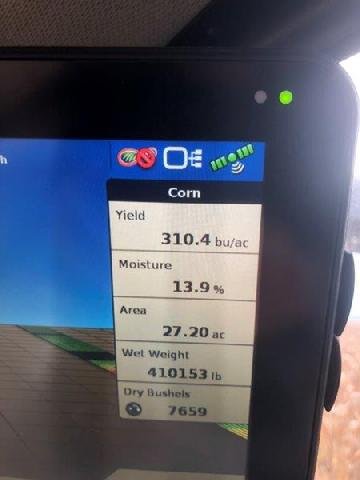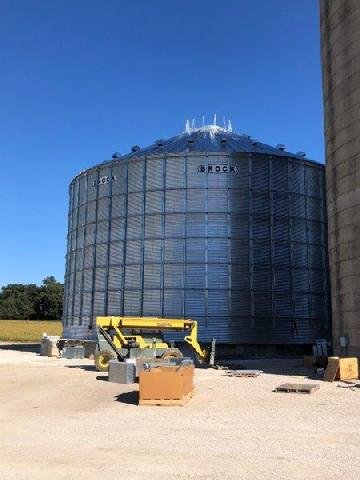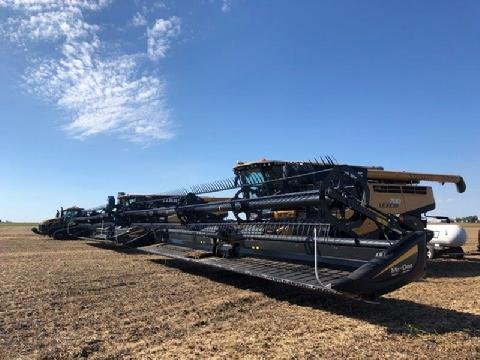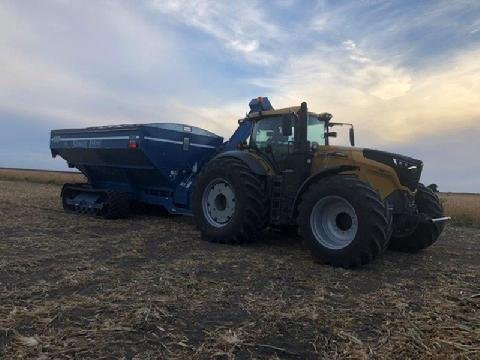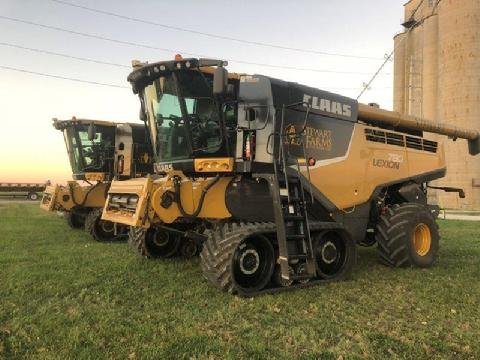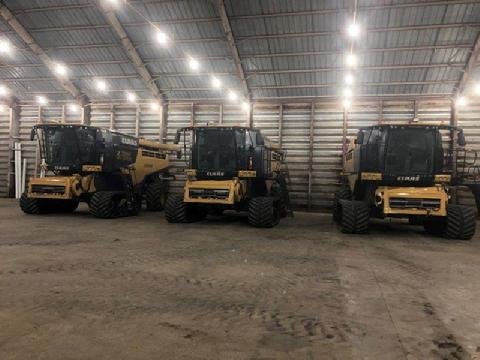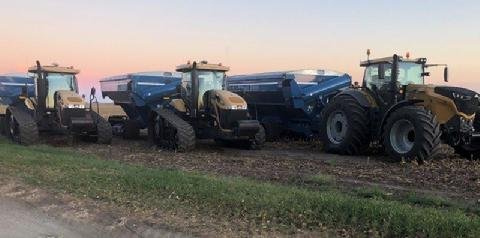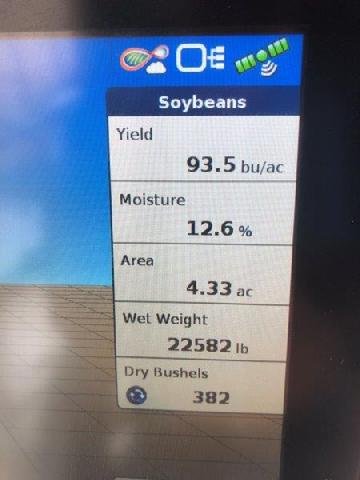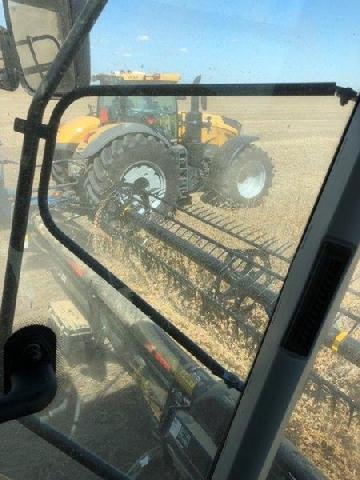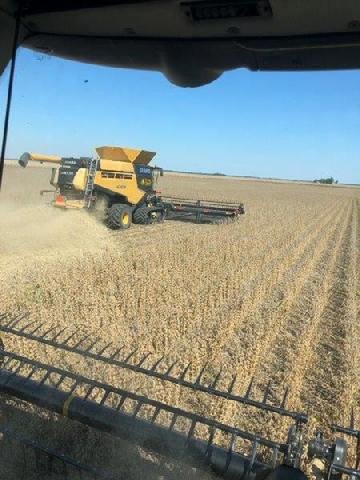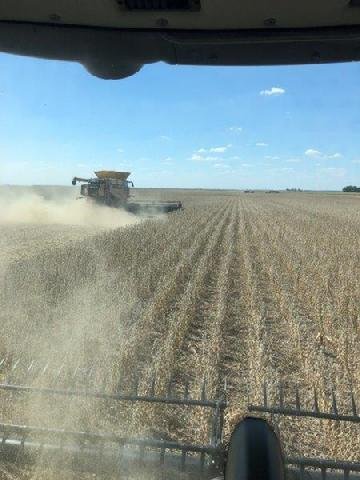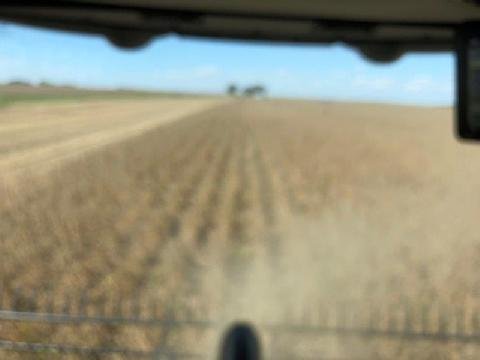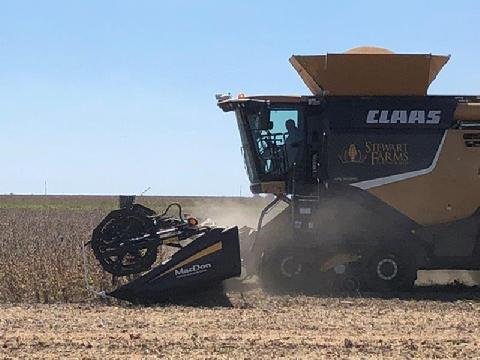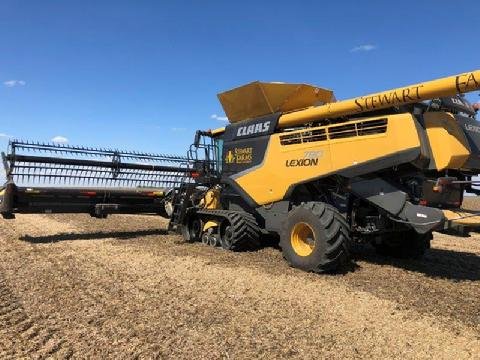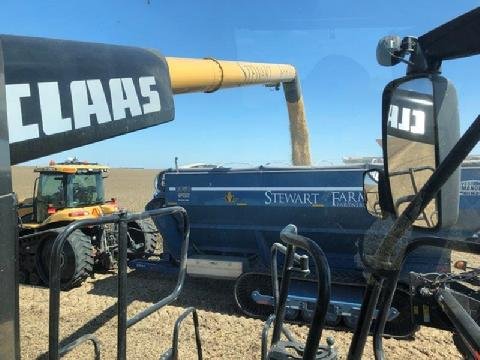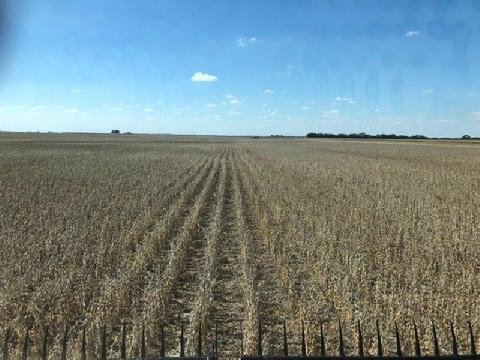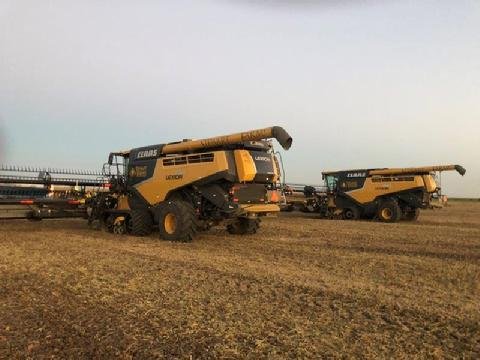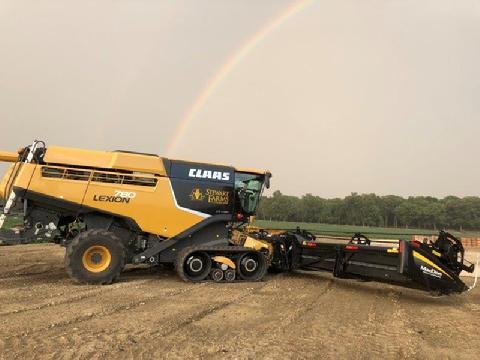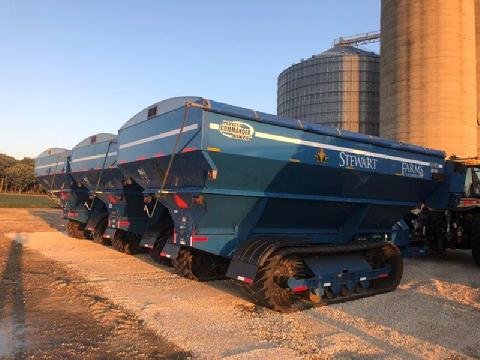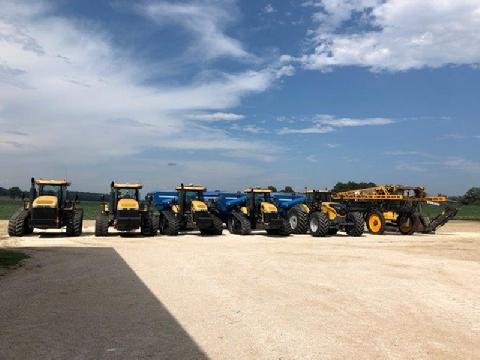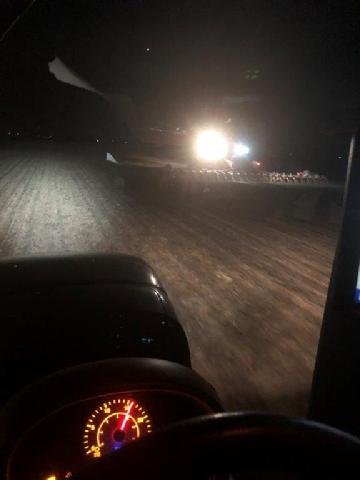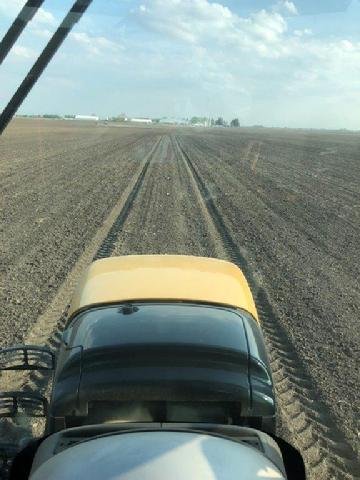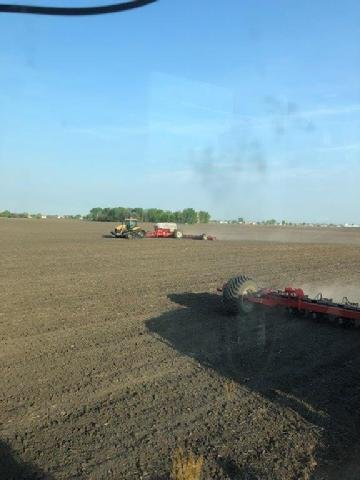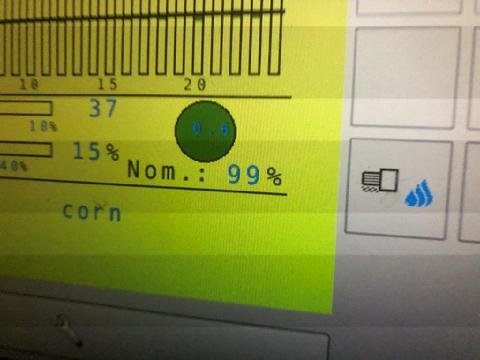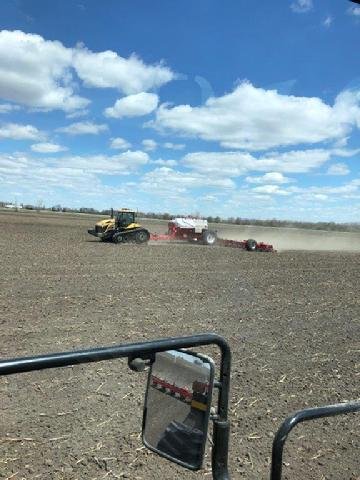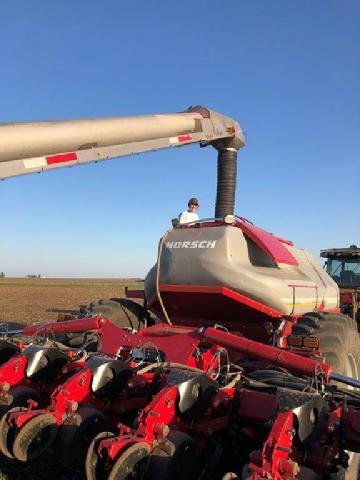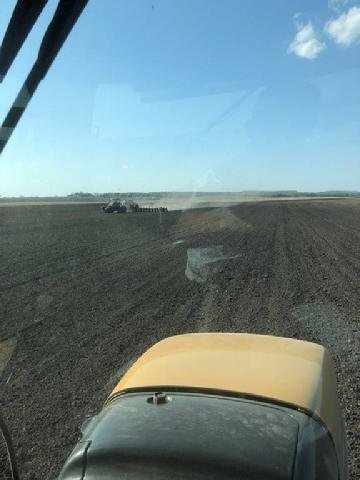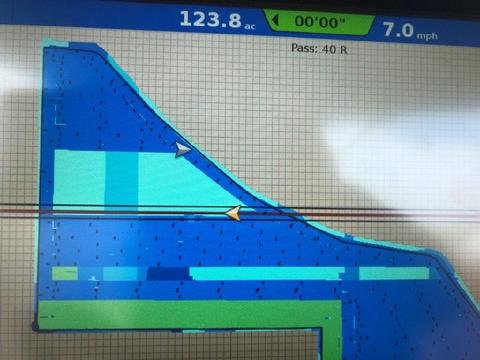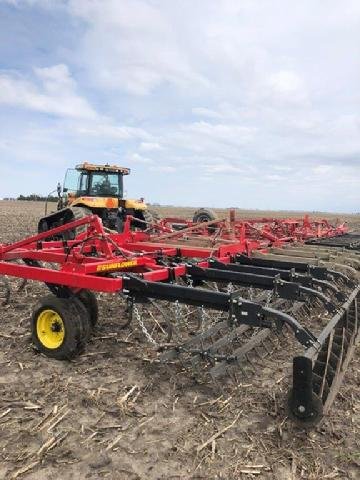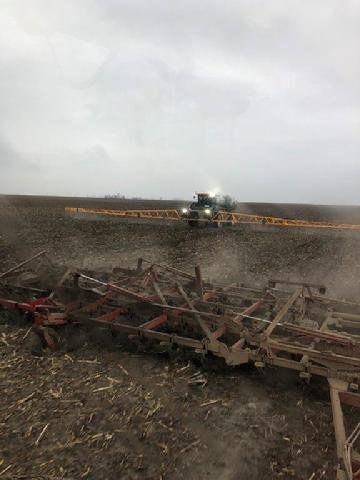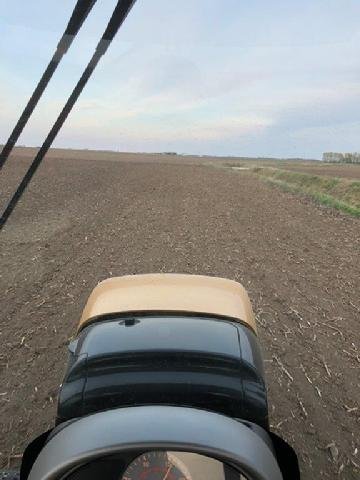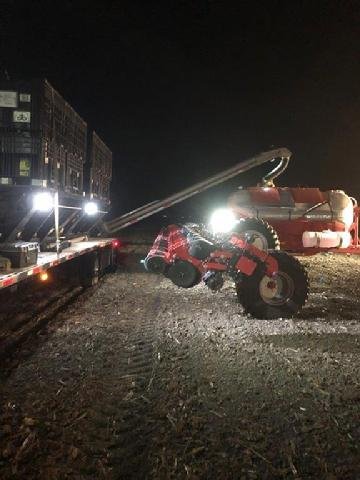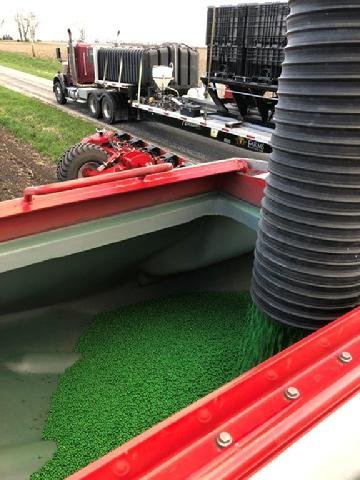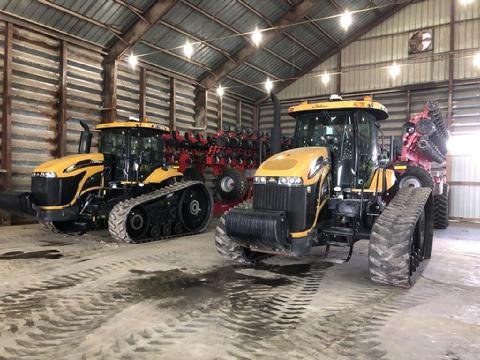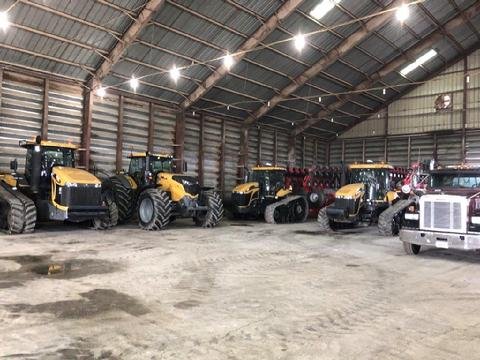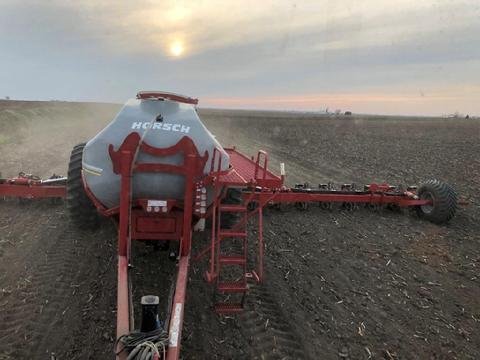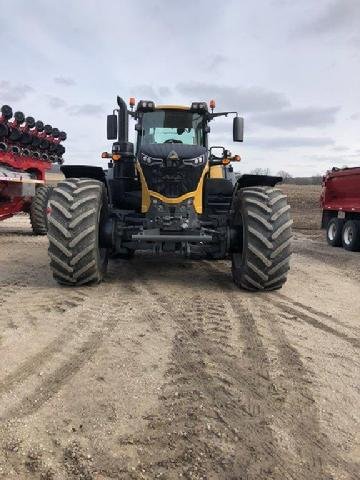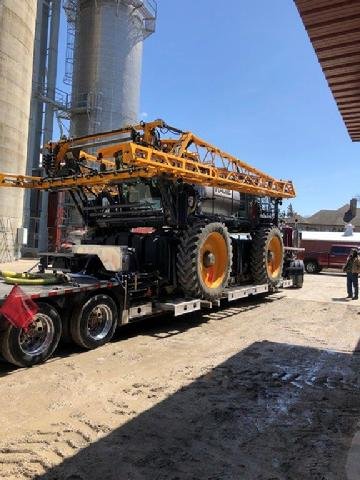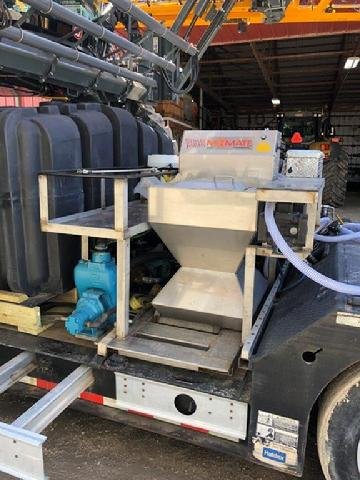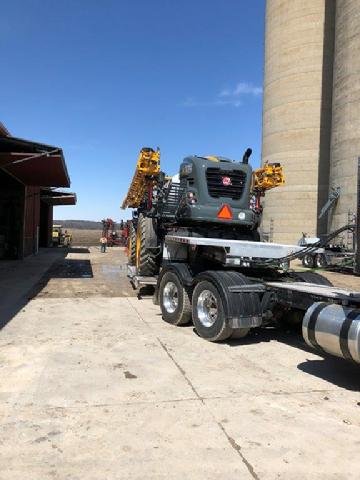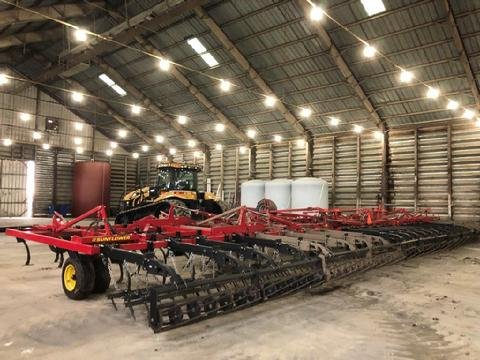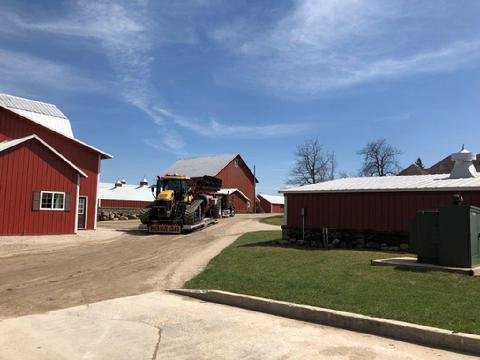2018 Crop Year
Harvest Season
Week Ending October 28th
We ran soybeans early in the week and then switched to corn. The new grain bin is now ready to fill so we could switch back to corn. Corn moisture levels are now down to 17%. We are still running the corn through the dryer before going into the bins.
Keith was back in the 1050 tractor on the weekend. He is getting good at running the grain cart.
Week Ending October 21st
We switched over to soybeans this past week. Soybean moisture levels were good at 12-13%. The biggest challenge in soybeans this year remains the tough stems in our full-season soybeans. We were only able to run 2.5 to 3.5 mph in many of the fields which slowed down progress. The tough conditions also resulted in us breaking a few feeder drum belts on the combines.
While testing out a new draper head we were able to run three machines on beans on one of the days which got us through a few more beans on that day. The backup Lexion 595 got to make an appearance. Dad was happy to get to run it again.
Week Ending October 14th
We were able to get a good start on corn around home this week. Moisture levels were around 20% and yields were better than expected with most fields above 250 bushels per acre. Field conditions were slightly wet but not too bad considering we had 3 inches of rain over the previous weekend.
Sarah ran one of the grain carts this week for the first time. She did well and is now also a fan of the Challenger 1050 wheel tractor.
On Saturday we had one of our best harvest days for us in terms of corn volume. We harvested over 100,000 bushels on that day with the two machines.
Week Ending October 7
We were able to finish up soybeans in Farmer City this week. The full-season beans (group 3.6-3.7) that we were cutting this week were still green and tough stemmed which made combining slow. Much of the time we could not run above 3 mph. Moisture levels were right at 12-14% so we kept pushing through them. Yields were very good with field averages of 80-95 bushels per acre.
We finished up the soybeans at about 11 pm on Thursday evening about 30 minutes before it started to rain. Our timing was very fortunate since it rained 2 inches overnight. We were able to get all of the machines moved back home before the weekend.
We also got all of our limestone applied in the Farmer City area last week. We spread limestone to maintain the desired pH in the soil. About 1/3 of our acres are soil tested each year on 2.5 acre grids and we apply limestone based on those test results. Limestone and dry fertilizer are applied with variable-rate equipment. Below is a video of the limestone applications. We had one of our best one-day runs with the lime spreader this week. We applied 700 tons in one day.
Week Ending September 29
We had another good week of harvesting in Farmer City, IL. We finish corn there on Saturday and moved some of the corn equipment home. We still have some full-season soybeans to finish in Farmer City before we move the combines home. Corn yields continue to be very good with field averages of 250-275 bushels per acre. Moisture levels were 13-18% depending on the corn hybrid maturity and plant health.
We did have some time for a little farmer fun this week. We raced three loaded grain carts over a 1-mile course to see which tractor performed better. It was a tight race between the Challenger 1050 wheel tractor and the Challenger 865B. The high-speed capabilities of the 1050 gave it a win with the long course run of a mile. In a short haul, the 865 would likely beat it due to its higher horsepower.
See pictures and videos from this week below.
Week Ending September 22
We had a good week of harvesting in Farmer City, IL. We finished our early season (3.1 maturity) beans early in the week and switched over to corn. We found that corn moisture levels had fallen about 5 percentage points in five days. When we started corn on Wednesday, moisture levels were at 22%. By the end of the week, moisture had fallen to less than 15% in some hybrids. The unusually hot weather of the last week with daily highs above 90 degrees has dried to corn down quickly. While it will save on drying costs, the downside of dry corn is that we will likely have more harvest loss due to corn shelling on the corn heads.
Corn yields have been very good with field averages of over 270 bushels per acre. The high yields have left us and the local elevators looking for places to store corn.
The new grain bin back at the home farm is about 1/2 done. It will be finished by the time we move north. The new bin is a 350,000-bushel bin. We are glad we decided to add that bin back in the spring.
Below are some pictures from the week.
Week Ending September 16th
We were able to start harvesting in Farmer City, IL this week. We tried corn on Wednesday but found that it was still too wet at 26-27% moisture. The corn we did take out was yielding very well at around 270 bushels per acre.
We switched to soybeans and had a couple of good days of running. The stems are still green which makes cutting them hard but the moisture levels of the beans were dry. Most loads were 11-13%. Yields are better than expected with field averages of over 85 bushels per acre so far.
We are running two Claas 780 combines again this year with 45' MacDon draper heads and 16-row Claas corn heads.
Below are some pictures from the week.
Week Ending Sepetmer 9th
We have been busy getting machines ready for harvest. Both corn and beans are still fairly wet. We hope to start harvesting in Farmer City next week.
Belowe are some pictures of the equipment ready to go.
Spring Season
Week Ending May 12th
We were able to get started planting corn around home on Monday, May 7th. We were able to make good progress all week before getting rained out on Friday. We are down to about two fields of corn left.
We are starting to feel the effects of running hard for a couple of weeks now. We ran until 2 am on Wednesday morning to beat some rain coming in. We were able to finish the field but were feeling the effects of lack of sleep when the fields dried off quickly the next day and we were running again in the afternoon.
Week Ending May 5th
We started planting corn early in the week in Farmer City and finished by the end of the week. Field condtions were very good. Warm weather finally dried out the soil. We were able to start moving machines north to home by the end of the week.
We are agin running the Ag Leader Display cast in our planters and sprayer so that we can instantly share coverarge maps. This makes running the two planters in one field much more efficient.
Both the corn and soybeans are agin being seeded with variabable rate prescriptions that are based on soil types and yield history of the different regions of the field.
Week Ending April 28th
We were finally able to get in the fields in central Illinois this week. We started planting soybeans on April 25th. Due to the cool temperatures, we decided to start on soybeans first before corn. We have had good luck planting soybeans into cool soil in the past.
Most years we are able to start planting in central Illinois about two weeks ahead of northern Illinois. This allows us to get done planting around Farmer City and get moved home when planting starts there. The cool weather delay this year made it so planting started in both locations about the same day, causing us to miss out on our normal two-week head start on planting.
We are running two Horsch 24-row/30-inch planters again this year. To keep operations more efficient, we are trying to run them together in the same fields and crop instead of splitting them up as we have in the past. We are running two 60-foot field cultivators ahead of them. The beans are again being rolled with a 60-foot land roller after they are planted. All of the field operations are done on a controlled traffic pattern with RTK GPS on a 60-foot pattern and 120-inch wheel spacing.
We were able to get nearly all of the soybeans planted by Monday, April 30th.
Week Ending April 21
The cool/wet spring weather continues here in Illinois. We have had the machinery ready to go now for a couple of weeks but the weather has held us out of the field so far. Below are some of the machines ready for spring work when the weather breaks.
We added a Challenger 1050 wheel tractor to the fleet this year. We are going to primarily use it on the roller in the spring and fertilzer spreader in the fall.
